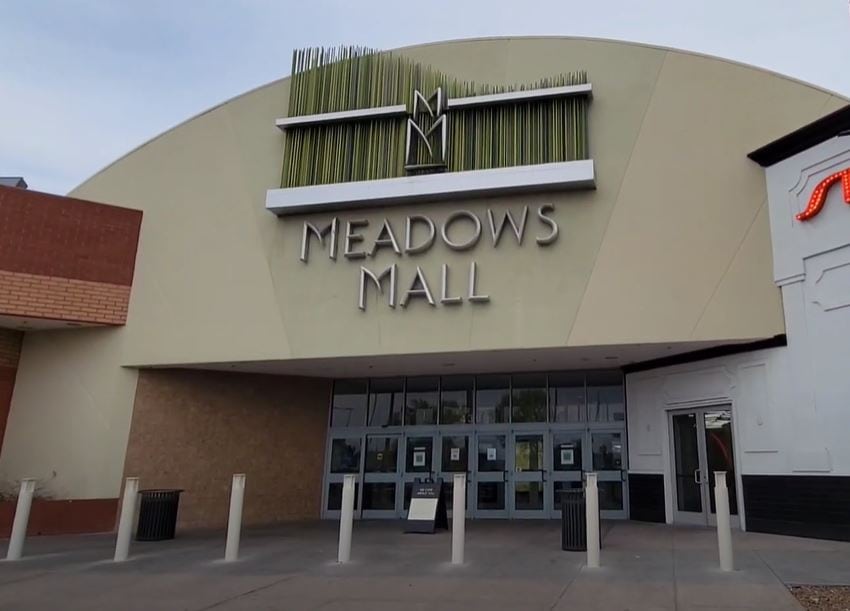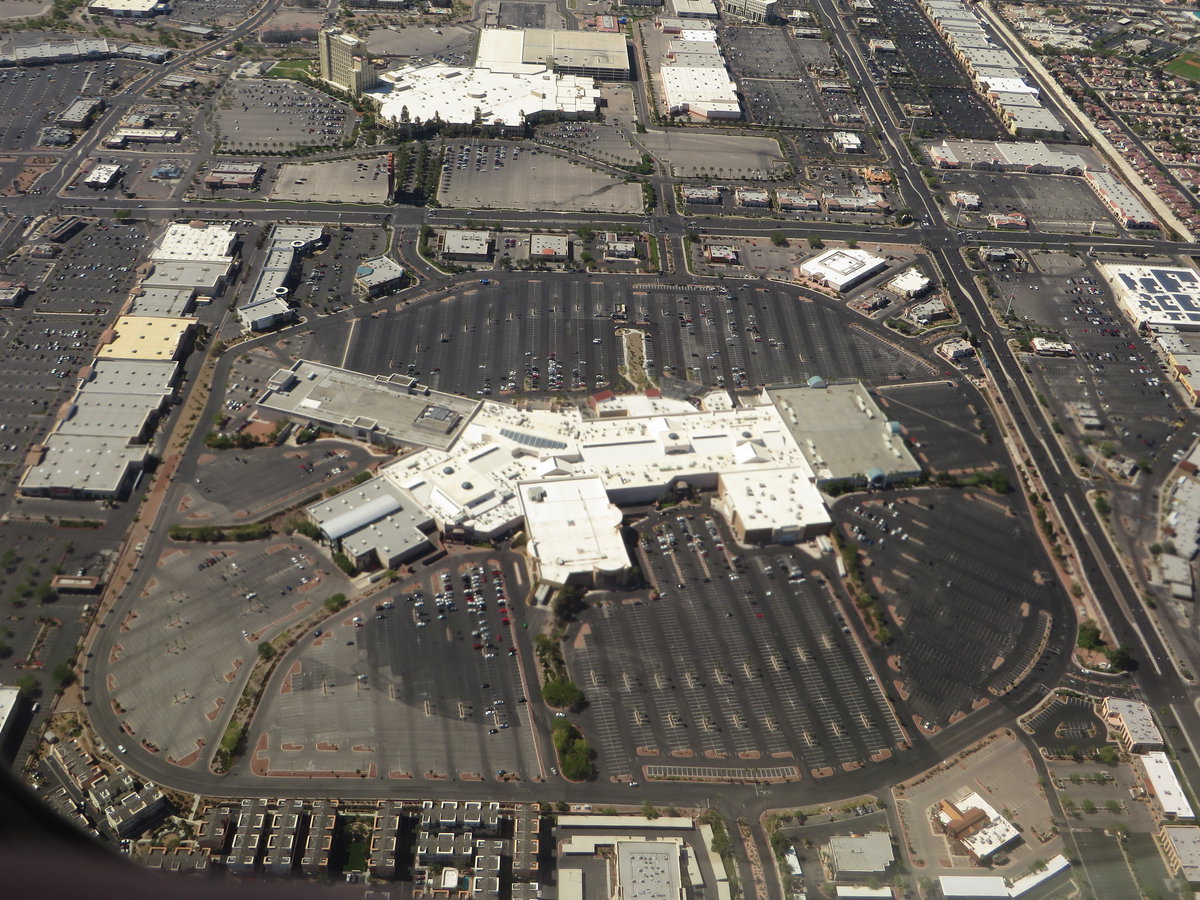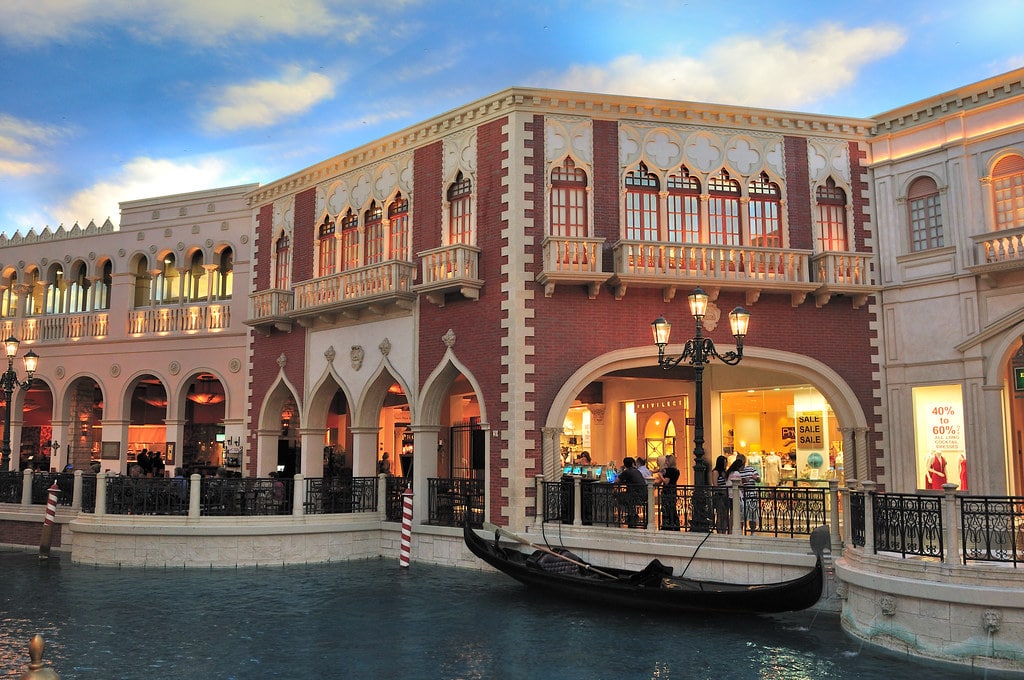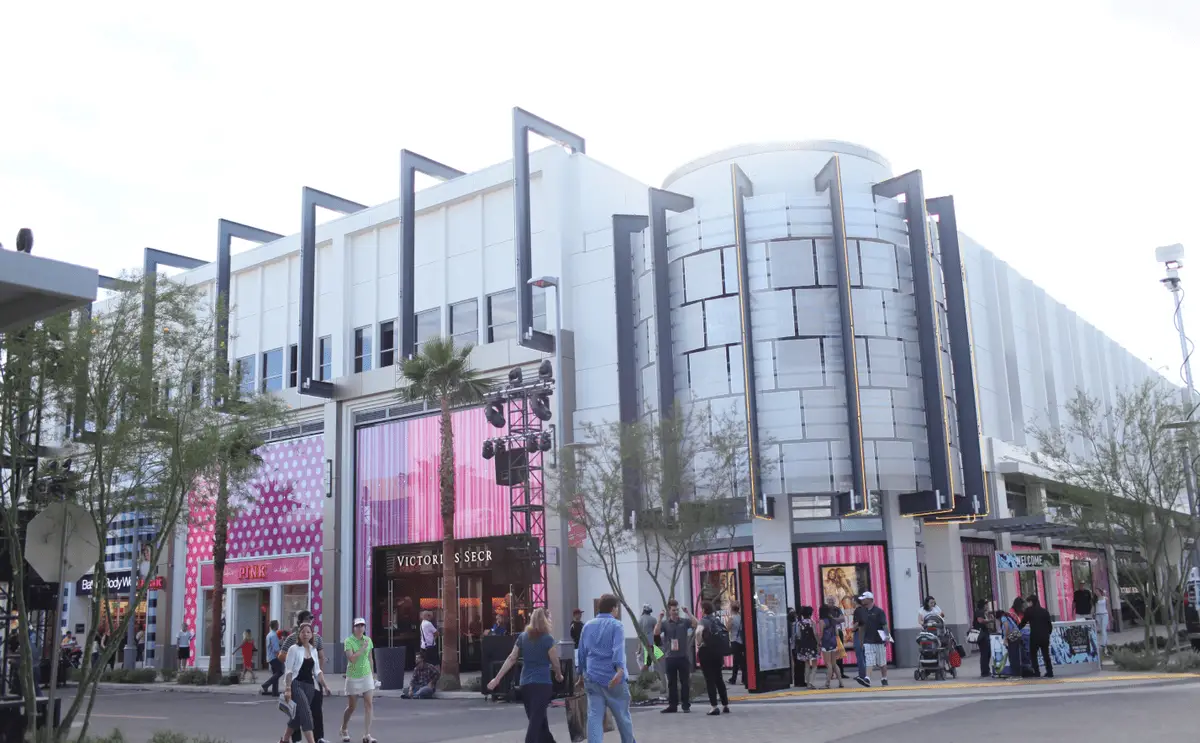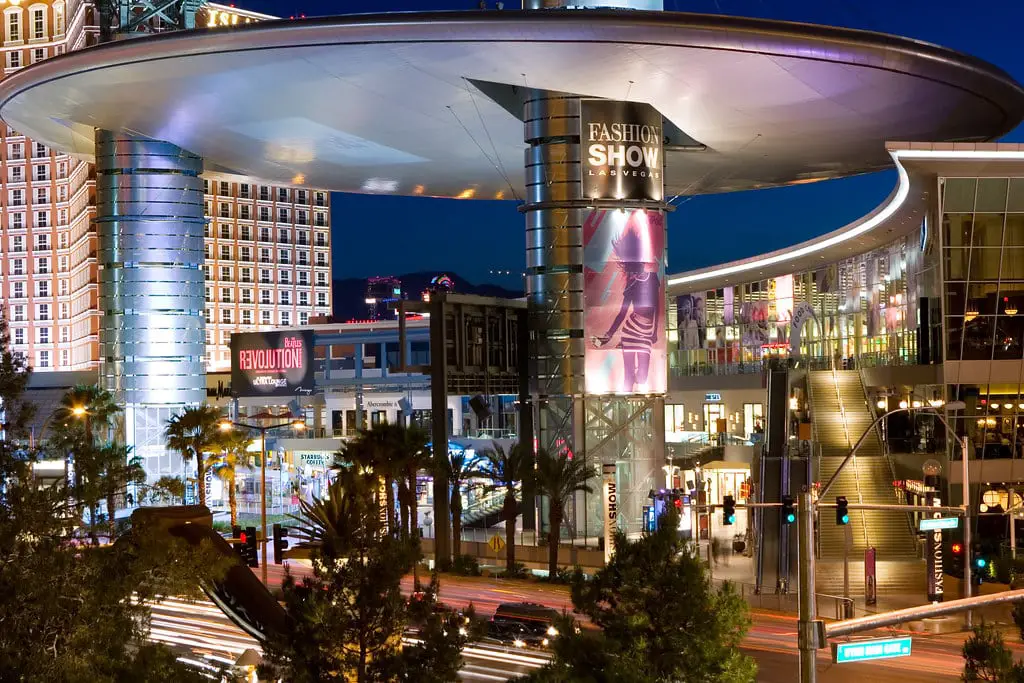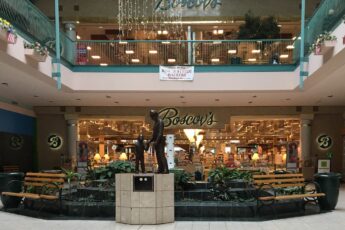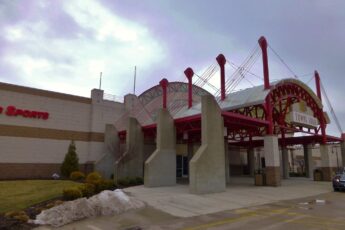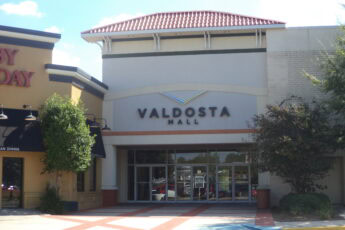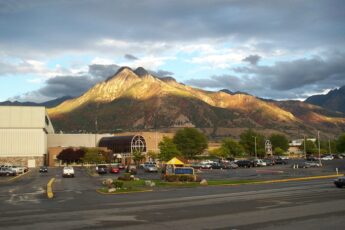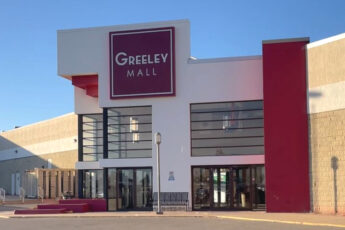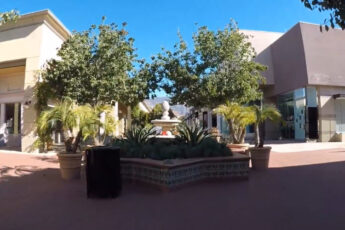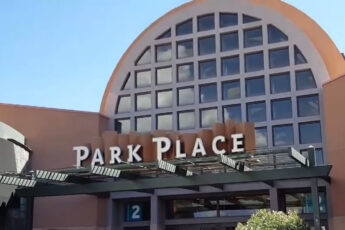If you think the Las Vegas Strip has seen it all, you have not walked the 1.2 miles of the Miracle Mile Shops lately.
Sitting in the heart of Paradise, Nevada, this indoor shopping center attracts millions of visitors every year with its sharp mix of stores, restaurants, and entertainment.
Changes keep coming, and the old Desert Passage days feel a world away.
Anyone looking for things to do in Paradise will find that this mall is more than retail - it is part of the Strip's pulse.
Origins and Early Challenges
Plans for Desert Passage, the mall that eventually became Miracle Mile Shops, first surfaced in March 1997.
TrizecHahn and real estate developer Jack Sommer shaped the early vision, pairing it with the Aladdin resort.
The goal was clear: build an enclosed, Arabian-themed mall that could compete with heavyweights like the Forum Shops.
With a $290 million construction budget, the project moved fast.
Desert Passage opened its doors on August 17, 2000.
It stretched 475,000 square feet across a looping 1.2-mile floor plan, offering 130 stores and 14 restaurants.
Design firm RTKL Associates added sky-painted ceilings and more than 100 Moroccan lamps.
Retailers such as Tommy Bahama, Hugo Boss, Aveda, Sephora, Clinique, and Z Gallerie filled the spaces.
Visitors walked past a faux freighter and watched a rain show that timed itself throughout the day.
The theme was strict - no oversized display windows, no loud signage - giving the place a carefully contained feel.
Problems appeared quickly. Although management projected 50,000 visitors a day, traffic never met expectations.
Early struggles were tied to financial trouble at the Aladdin resort, which filed for bankruptcy in 2001.
Some tenants accused management of inflating visitor counts and failing to sign a major anchor tenant.
Others complained about weak advertising support. By the early 2000s, critics had started calling the place "Deserted Passage," and the name stuck.
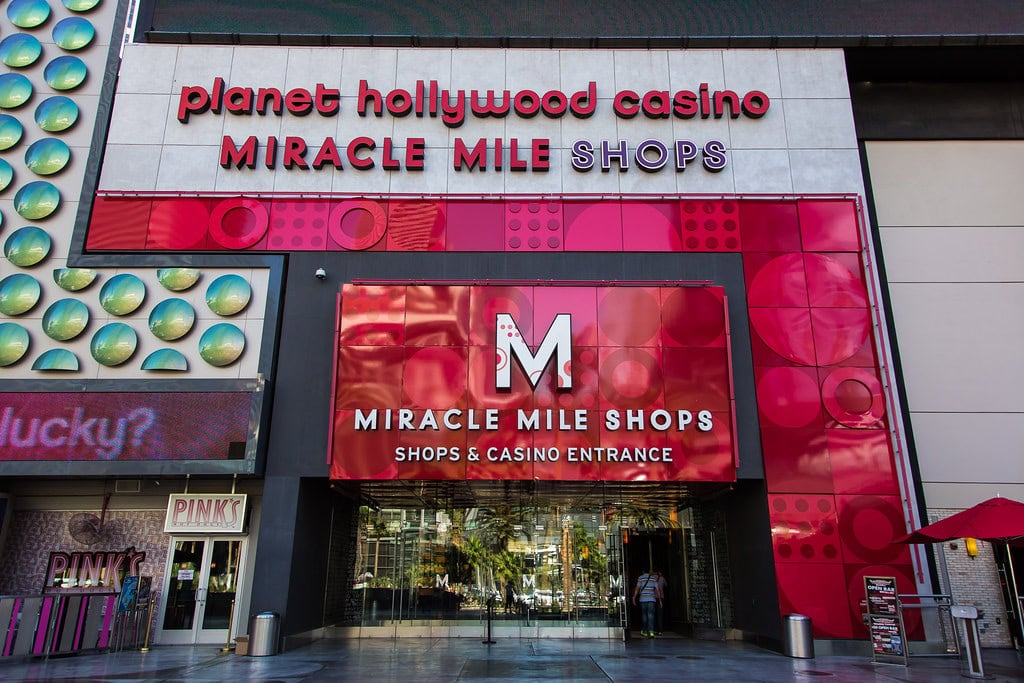
How Desert Passage Filled Its Halls With Shows, Food, and Early Experiments
Early plans for Desert Passage carved out space not only for retail but for daily live entertainment.
More than 30 performers moved through the corridors each day - acrobats balancing above crowds, contortionists folding into impossible shapes, musicians, and dancers filling corners of the looping walkway.
A faux freighter, moored in one wing of the mall, stood as a physical centerpiece.
The indoor rain show, still a familiar sight today, was first launched during those early years.
It brought a splash of street theater inside the cooled hallways.
Food and nightlife spaces inside Desert Passage shifted faster than the main retail zones.
The Alakazam Food Court, covering 15,000 square feet, closed in 2002 after failing to pull steady business.
By 2003, the former dining space had been converted into Sevilla, a restaurant and nightclub with Charo headlining its short run.
Less than four months later, Sevilla filed for Chapter 11 bankruptcy.
The space shifted again, reopening as the Ovation Theatre & Events Center before landing in the hands of producer David Saxe, who bought it for $3 million in 2004.
The venue eventually evolved into the V Theater and Event Center after a $4 million renovation launched in 2007.
Among early restaurant experiments, Commander's Palace brought fine dining to the Strip inside the mall.
At the same time, New York's Blue Note Jazz Club opened its second U.S. location there.
It seats 500 in its main venue and 150 more at the attached Blue Note Cafe.
Blue Note's run ended by 2003, while Commander's Palace stayed open for a few more years before shuttering.
This was part of the mall's slow pivot toward quicker dining and live performance spaces.
Renovations, Ownership Deals, and the Name Change
In December 2003, Boulevard Invest - a joint venture formed by New York developer David Edelstein and RFR Holding - bought the mall for $240.5 million.
Urban Retail Properties stepped in to manage daily operations, facing an uphill climb with foot traffic and tenant turnover.
By 2006, the mall needed more than new management.
It needed a full identity shift. Renovations started that year, matching the broader plan to rebrand the Aladdin resort as Planet Hollywood.
The goal was clear: abandon the tight Arabian theme and reset expectations for shoppers on the Strip.
Design firm Gensler handled the overhaul. Cobblestone flooring, which had been a headache for visitors and maintenance crews alike, was ripped out.
The lighting was upgraded. Storefronts, once required to blend into faux marketplaces, were redesigned to let brands show off.
On May 1, 2007, the property officially reopened as Miracle Mile Shops.
The new name pointed to a new direction: less stylized, more accessible, and better connected to the Strip's tourist energy.
General Manager Russell Joyner described it as "Hollywood meets Times Square," a mix meant to feel louder, faster, and more urban.
The early signs worked. Visitor counts jumped from around 15 million in 2004 to 22 million by 2009.
Roughly 90 percent of traffic came from tourists, a clear signal that the mall had hit a more dependable stride.
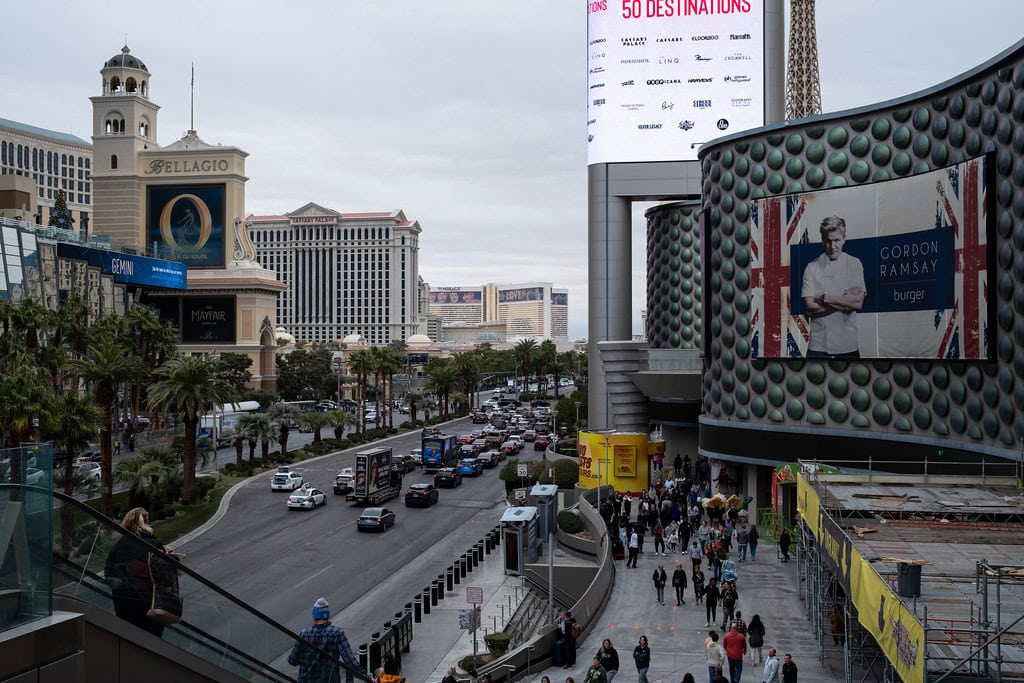
Technology Investments and the 2020s Overhaul
By 2016, Miracle Mile Shops had outgrown its mid-2000s facelift.
Institutional Mall Investors LLC, a joint venture between Miller Capital Advisory and CalPERS, purchased the property for around $1 billion.
Fresh capital and new ownership opened the door for another upgrade cycle, with early renovation plans surfacing by 2017.
Initial work was scheduled for 2020 but stalled, like much of the Las Vegas Strip, because of global shutdowns.
Construction crews finally got rolling in January 2022.
They worked in phases to keep the 475,000-square-foot mall open, a tricky task given its size and foot traffic.
The renovation plan leaned heavily on technology.
More than 20,000 square feet of LED screens were installed on exterior and interior walls, giving Miracle Mile Shops a brighter, flashier face along Las Vegas Boulevard.
Inside, crews redid the floors, replaced aging ceilings, and installed new lighting systems to make the 1.2-mile loop easier to navigate.
New updates reshaped the entertainment side of the mall, too.
The Rain Show, part of Desert Passage since the beginning, got a full overhaul with fresh projection technology.
Near the V Theater, a new projection called The Lost City Show began pulling eyes from passersby along the main walkway.
Renovation work wrapped up by June 2023, bringing a fresher, more flexible layout that fits the post-2020 Strip - faster, digital-heavy, and built to grab visitors the moment they step in from the sidewalk.
Miracle Eats, Fast Expansions, and the Next Phase
In 2024, Miracle Eats started to take shape near the south entrance, behind temporary walls and construction dust.
The idea was simple: build a real food court but strip out the tired plastic tray feeling that most tourists have come to expect.
Confirmed names trickled out fast. Tacotarian would serve vegan tacos, a rare treat on this part of the Strip.
Carnegie Pizza promised massive New York slices - foldable, greasy, and easy to eat one-handed.
The Nashville-based chain Dave's Hot Chicken grabbed a corner lot and brought its four-alarm heat levels into the mall for the first time.
The build-out aimed for faster turnover and tighter menus.
No sprawling food courts where diners camp out for an hour.
Miracle Eats was being built for short bursts - ten, maybe fifteen minutes before people flowed back toward the shops or theaters.
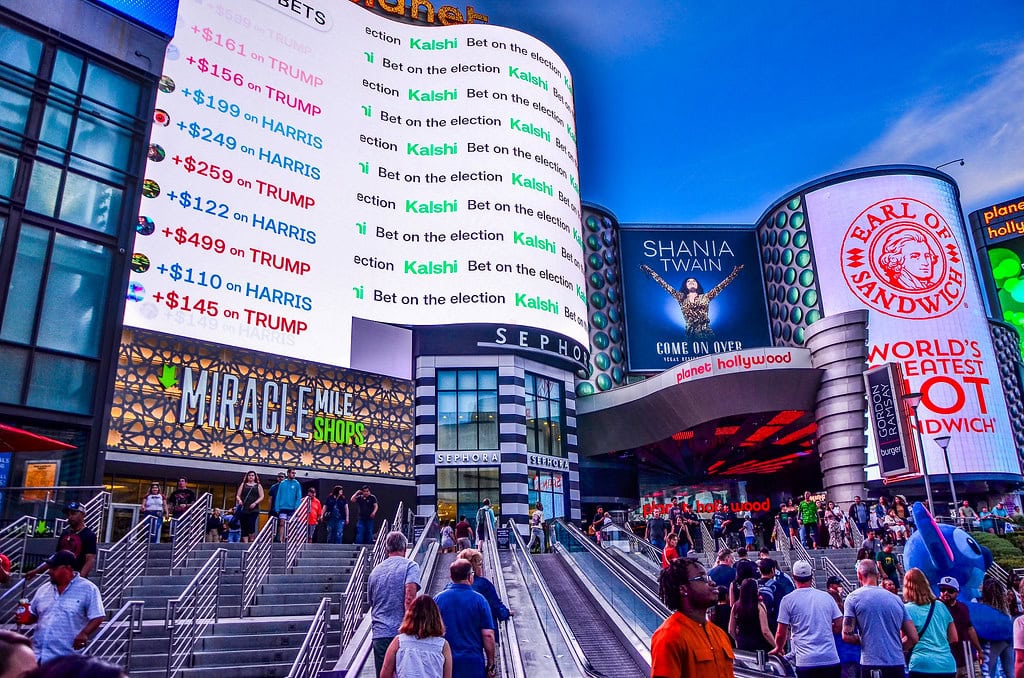
Retail Shifts, Restaurant Moves, and the New Rhythm Inside
By the time Miracle Mile Shops finished tearing up floors and rewiring ceilings in 2023, the work on tenants had already started and hasn't stopped to present.
Management made it clear that the mall would not chase the luxury crowd like others along the Strip.
That space was crowded. Miracle Mile had different ambitions.
Pop Mart sells collectible toys to a crowd that does not blink at $15 keychains.
Oculus Sunglass Boutique packs designer shades into a small center-walk space built for quick stops.
Lovisa and Calzedonia | Intimissimi offer faster fashion setups that make it easy to browse without feeling trapped in a full shopping commitment.
Dining shifts followed the same rhythm. Blondie's Sports Bar stays packed with screens and pitchers.
Cabo Wabo Cantina leans on its live music nights to pull in sidewalk traffic.
Lobster Me runs a tight seafood menu near the entrance, banking on quick lobster rolls and shrimp baskets instead of long sit-down meals.
PBR Rock Bar keeps its speakers up and its beer towers full, built more for noise and energy than slow dinners.
Miracle Mile Shops bets that frictionless movement, flashes of music, and fast decisions will keep visitors inside longer than polished displays ever could.
It is not trying to be a gallery - it is trying to be a rolling Friday night.
🍀

